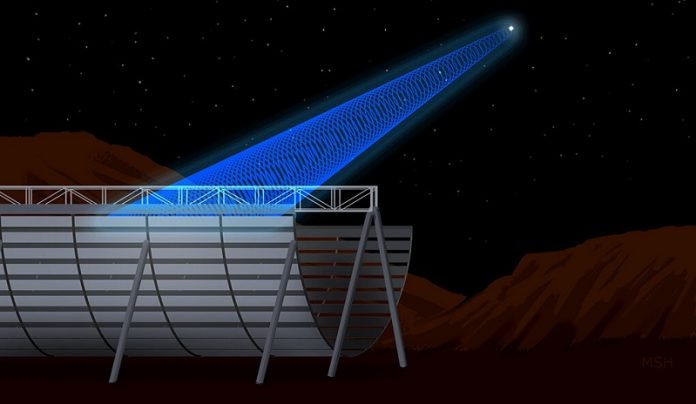
It beats like a busy signal — one that scientists were excited to get.
A new study in Nature reports the discovery of a fast radio burst (FRB) that pulses at regular intervals — every 16.35 days — from a nearby galaxy.
“Some FRBs are known to repeat, but only irregularly, with cadences ranging from seconds to days,” said Laura Newburgh, an assistant professor of physics at Yale involved in the Canadian Hydrogen Intensity Mapping Experiment (CHIME), which produced the research.
“This paper is the first evidence that some FRBs repeat regularly.”
Newburgh helped build the CHIME telescope in 2017 and leads a team that calibrates it.
FRBs are extremely bright, fast radio emissions with more energy than what the Sun generates over many years.
Researchers say their intensity indicates they are connected to highly energetic astrophysical events in their galaxy of origin, such as neutron stars or black holes, which are of great interest to scientists.
Astronomers discovered the existence of FRBs a decade ago; they are still debating what causes the signals.
But scientists at CHIME continue to search for answers. CHIME is a collaboration of 50 scientists, led by the University of British Columbia, McGill University, the University of Toronto, and the National Research Council of Canada.
The collaboration uses a radio telescope located in the mountains of British Columbia’s Okanagan Valley. The CHIME telescope has four cylindrical reflector dishes that cover an area equal to two football fields.
Earlier this year CHIME worked with astronomers in Europe to pinpoint the origin of a particular FRB emission — called FRB 180916.J0158+65 — to a galaxy located 500 million light years from Earth.
Now CHIME has determined that FRB 180916 pulses at predictable intervals more than two weeks apart.
“It tells us that the origin of at least some FRBs is astrophysically regular in nature, but on long enough time scales that they may be tied to something different than a rotating, compact object — perhaps something like an orbiting system,” said Newburgh, whose lab builds instrumentation for collecting data about the history of the cosmos.
CHIME measures roughly one FRB per day, she added. The collaboration is building a database of FRB cadences, locations, energetics, and distributions in the sky.
CHIME also will continue monitoring FRB 180916. If any observed properties of its pulses change regularly, it will provide important clues about the environment of space close to its point of origin, said the scientists.
Written by Jim Shelton



